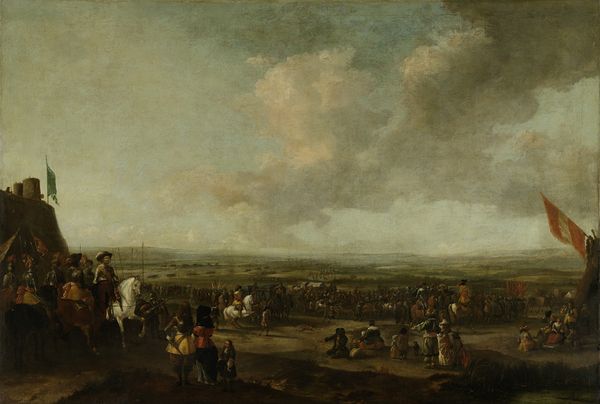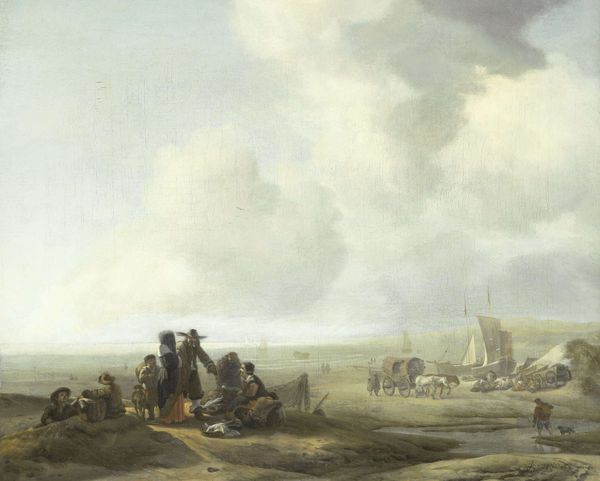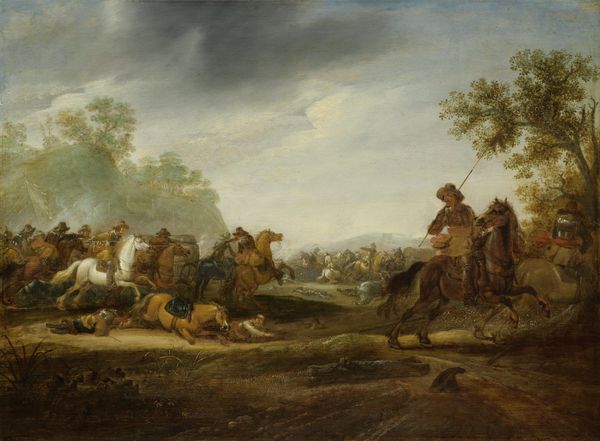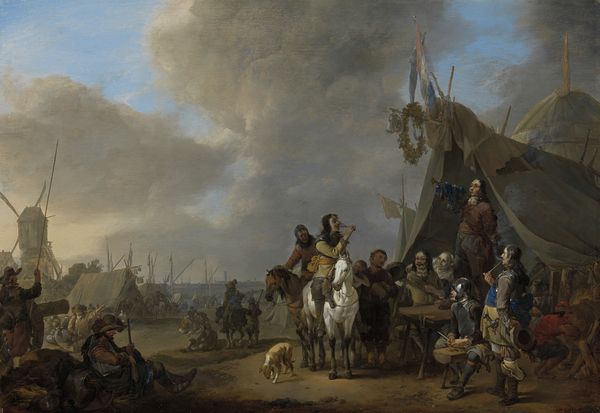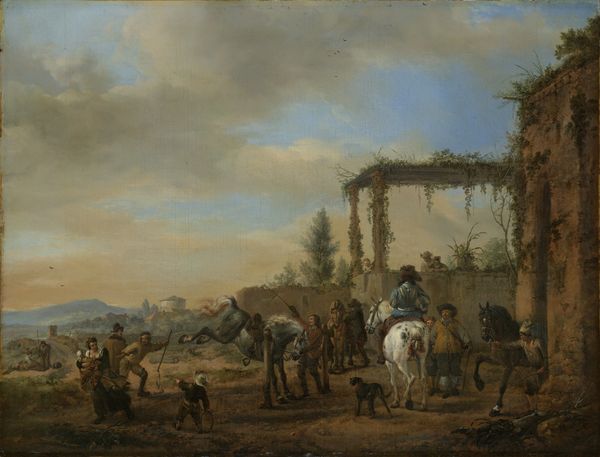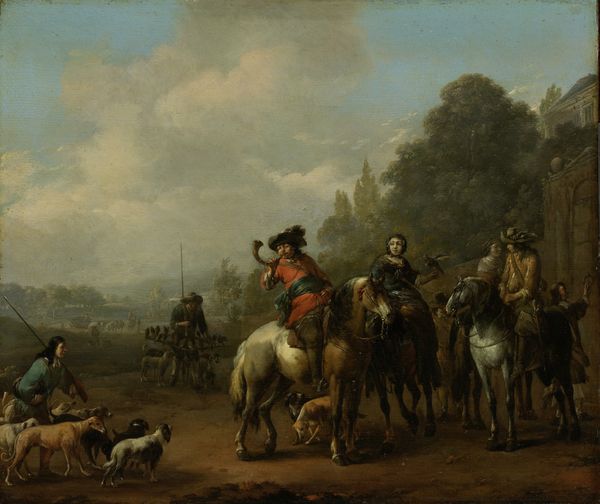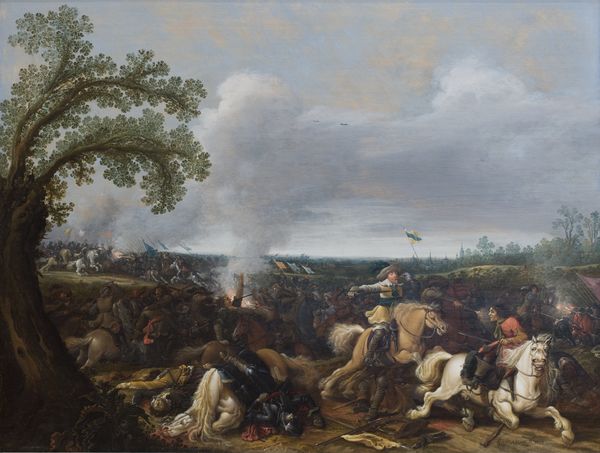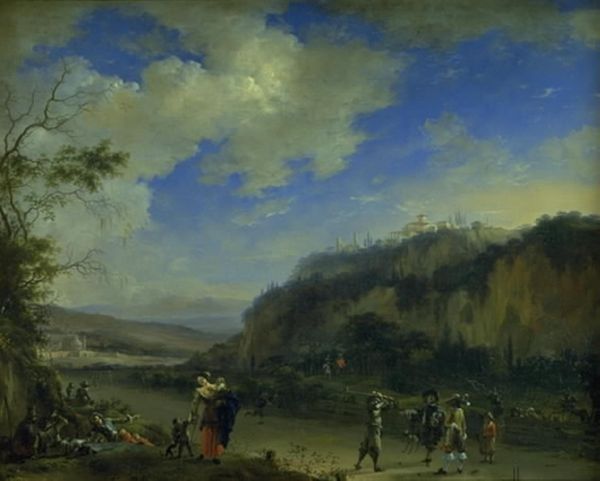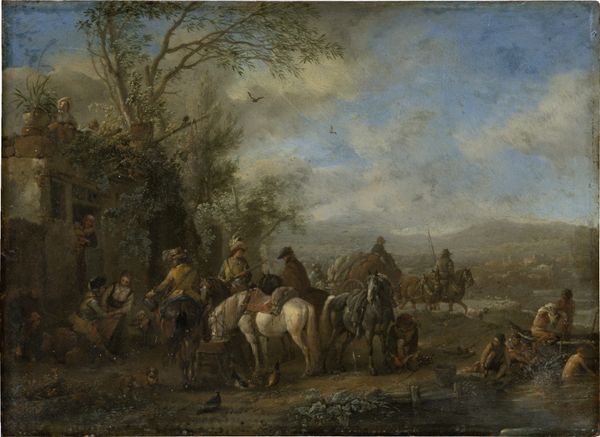
painting, oil-paint
#
baroque
#
painting
#
oil-paint
#
landscape
#
figuration
#
genre-painting
#
history-painting
Dimensions: height 49 cm, width 74 cm
Copyright: Rijks Museum: Open Domain
Curator: I’m immediately struck by the chaotic energy; the composition, while seemingly disordered, possesses a dramatic tension that pulls you right into the heart of the conflict. Editor: Absolutely. Let’s introduce what we’re seeing. This is Jan Asselijn’s “Cavalry Attack at Sunset,” painted in 1646. It's currently housed here at the Rijksmuseum, rendered in oil paint, capturing a scene of battle. Curator: Asselijn, during the Dutch Golden Age, painted in Italy for a significant part of his career. One wonders about the market for such a scene. Is it glorifying military expansion? Does it align with some patriotic sensibility or fulfill a market need? Editor: I'm particularly fascinated by the visible brushstrokes in the smoke and dust – the way Asselijn manipulates the oil paint to almost feel like the grit and grime of the battlefield. He’s really layering, building a tactile sense of warfare. Look at the way he captured those worn uniforms, I wonder if the materials speak of resource struggles or access within that military context? Curator: The light is certainly important to note. Asselijn emphasizes it not just to illuminate, but to potentially romanticize the violence. It creates a theatrical and emotionally charged moment that makes the attack look, in some sense, noble. Considering that such depictions could play roles in shaping public perception and consolidating support for the state's endeavors. Editor: I notice too how muted the palette is overall. It steers clear of those bright triumphant colors that you’d usually find and leans into these earth tones and subdued hues, which makes you wonder how those readily available resources played a part. Could these muted palettes also comment on some material and lived experiences, perhaps of weariness? Curator: Perhaps! It challenges me to reconsider the narrative, acknowledging the grim material reality of soldiers and the machinery of warfare. Editor: Well, Jan Asselijn's work allows for such nuanced and interesting readings and explorations. Curator: I appreciate having had a moment to see this through the lens of both political interpretation and material specificity!
Comments
No comments
Be the first to comment and join the conversation on the ultimate creative platform.
